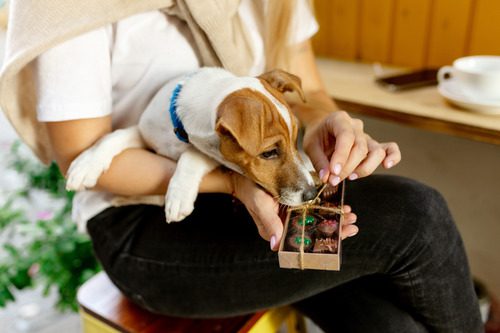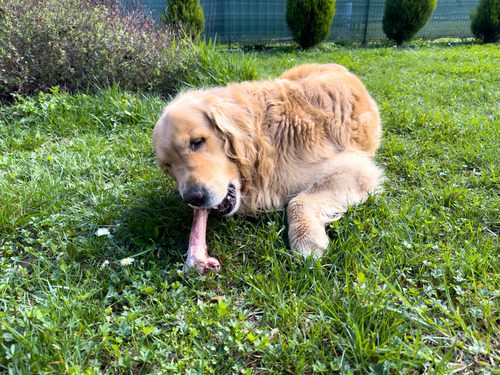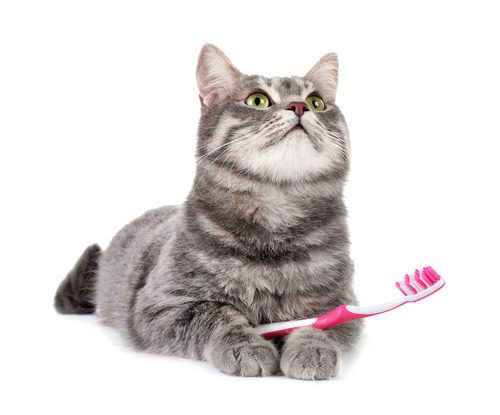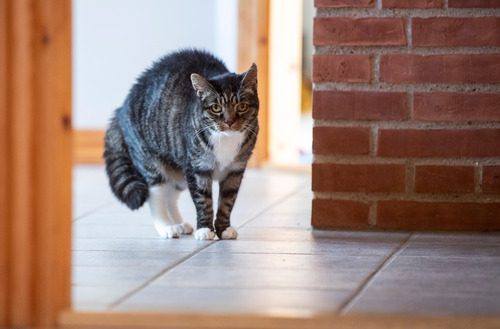Why Dogs Can’t Eat Chocolate and Tips for Keeping This Sweet Treat Out of Their Reach
Chocolate is a beloved indulgence for us, but for our dogs, it’s a hidden danger that can turn a sweet treat into a serious health threat. While it might be tempting to share a piece with those pleading eyes staring up at you, chocolate ingestion is toxic for dogs and should be avoided at all costs. This blog will dive into the reasons behind chocolate’s toxicity and provide practical tips to keep it out of your dog’s reach, ensuring they stay safe and healthy.

What Makes Chocolate Dangerous for Dogs?
Chocolate contains two substances that are harmful to dogs: theobromine and caffeine. While humans can metabolize these compounds efficiently, dogs process them much more slowly, allowing the toxins to build up to dangerous levels. The effects of theobromine and caffeine can vary depending on the type and amount of chocolate consumed, as well as the size and sensitivity of the dog.
Theobromine: The Primary Culprit
Theobromine affects the central nervous system, heart, and kidneys. Even small amounts can lead to symptoms such as restlessness, rapid breathing, tremors, and vomiting. In severe cases, theobromine poisoning can result in seizures, irregular heart rhythms, or even death.
Different Types of Chocolate: Varying Levels of Danger
Not all chocolates are created equal when it comes to theobromine content. Dark chocolate and baking chocolate contain the highest levels of theobromine, making them the most dangerous. Milk chocolate has a lower concentration, but it still poses a risk, especially if consumed in large quantities. White chocolate contains negligible amounts of theobromine but can still cause digestive upset due to its high fat and sugar content.
What Are Some Symptoms of Chocolate Poisoning in Dogs?
If your dog has ingested chocolate, the symptoms may vary depending on the amount consumed and the dog’s size.
Early Signs to Watch For
The initial signs of chocolate poisoning often appear within six to twelve hours of ingestion. These may include:
- Vomiting
- Diarrhea
- Increased thirst
- Excessive urination
- Restlessness
Advanced Symptoms of Chocolate Toxicity
As the toxins take effect, more severe symptoms may develop. These include:
- Muscle tremors
- Seizures
- An elevated heart rate
- In severe cases, heart failure
The risk of these symptoms increases with the amount of chocolate consumed relative to the dog’s weight.
How to Prevent Chocolate Ingestion
Here are some practical tips to help keep your dog safe from chocolate ingestion.
Store Chocolate Safely
Keep chocolate in high cabinets, closed containers, or the refrigerator. Be especially mindful of leaving chocolate out on countertops or tables, as dogs are often more resourceful than we give them credit for.
Teach Commands to Discourage Begging
Training your dog to follow basic commands, such as “leave it” or “stay,” can be incredibly helpful in preventing them from snatching food off the counter or out of your hand. Consistent training will reduce the risk of accidental chocolate consumption, especially during times when chocolate is more accessible, such as holidays or gatherings.
What to Do if Your Dog Eats Chocolate
Despite your best efforts, accidents can happen. If you suspect that your dog has ingested chocolate, act quickly and seek professional help.
Contact Your Veterinarian Immediately
If your dog has eaten chocolate, contact a veterinarian right away. At Heart + Paw, several of our locations offer walk-in urgent care for pets, so we can be here for your pet when it matters most. Call one of our locations and provide us with as much information as possible, including the type and amount of chocolate consumed, as well as your dog’s weight and any symptoms they are displaying. This will help us determine the best course of action.
Why Prompt Treatment Matters
Depending on the situation, your veterinarian may recommend bringing your dog in for urgent care, where they can administer treatments such as inducing vomiting, providing activated charcoal to absorb the toxins, or offering supportive care to manage symptoms.
Tips for Pet-Safe Celebrations
Holidays and celebrations often bring an abundance of chocolate into our homes, increasing the risk of accidental ingestion by dogs. During these times, take extra precautions to keep your pets safe.
- Start by designating specific areas where chocolate and other potentially harmful foods are kept out of your dog’s reach. This could mean setting up a pet-free zone in your kitchen or dining area, where guests can enjoy their treats without worry.
- Additionally, consider educating your guests about the dangers of chocolate for dogs before the festivities begin. A simple reminder can go a long way in preventing well-meaning guests from unknowingly offering your dog something dangerous.
- Lastly, provide your dog with special, pet-friendly treats during these occasions. By offering them their own safe and tasty snacks, you can help reduce the temptation for them to seek out something they shouldn’t have.
Why Regular Veterinary Visits Are Important
Regular check-ups with your veterinarian help maintain your dog’s overall health and well-being and provide an opportunity to discuss any concerns you may have about potential hazards like chocolate.
Building a Relationship with Your Vet
Having a trusted veterinarian who knows your dog’s health history can be invaluable, especially in emergency situations like chocolate ingestion. Regular visits help build a strong relationship with your vet, ensuring that your dog receives the best possible care when it’s needed most.
Monitoring Your Dog’s Diet
Your veterinarian can also offer guidance on your dog’s diet and help you identify any foods or substances that should be avoided. This proactive approach can prevent incidents like chocolate poisoning and keep your dog healthy and happy.
Staying Informed About Pet Safety
Keeping up with the latest information on pet safety can help you make informed decisions about what’s best for your dog. This includes understanding the dangers of certain foods and learning how to protect your pet from common household hazards.
Continuing Education for Pet Parents
As a pet parent, it’s important to stay informed about the latest research and recommendations regarding pet care. This knowledge will empower you to make the best choices for your dog’s health and safety.
Resources for Pet Safety
There are many resources available to help you learn more about pet safety, from veterinary blogs to pet care books. Taking the time to educate yourself will pay off in the long run, as you’ll be better equipped to prevent accidents and keep your dog out of harm’s way. For more information or if you have any concerns about your dog’s health, call any of our Heart + Paw locations or book an appointment online today!
Recent Posts
Can Dogs Eat Ham?
Ham is a popular meat found on many dinner tables, especially during the holidays. As a dog…
8 Signs and Symptoms of Diabetes in Dogs
Caring for a dog means being tuned in to the subtle changes that can reveal their overall…
Why Cat Teeth Cleaning is Important For Your Pet’s Health
As a cat owner, you know how important it is to care for your feline friend’s overall…
Cat Body Language: A Guide To Understand What Your Cat is Telling You
Imagine trying to communicate without words, relying solely on subtle gestures, glances, and movements. This is how…
Signs Your Cat Could Have Anxiety
When you think of anxiety, you might not immediately associate it with cats. However, our feline friends…
About Us
Heart + Paw was founded in 2018 by Chief Veterinary Officer Dr. George Melillo, who currently serves the Mid-Atlantic area. Heart + Paw offers a combination of veterinary care, pet grooming, and dog daycare to help be a resource in your pet parenthood journey.
We'd Love to Meet Your Four-Legged Friends
Find out how the friendly veterinary team at your local Heart + Paw can help your pets live longer, healthier lives by searching for a location near you.





